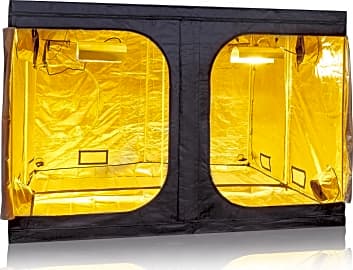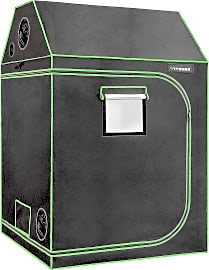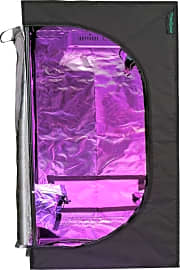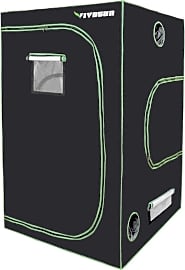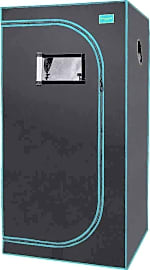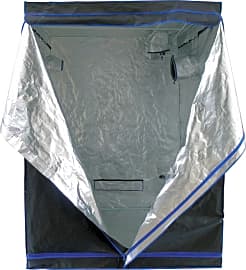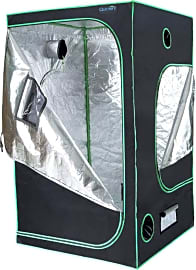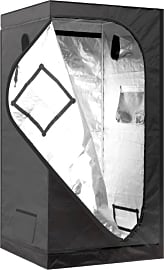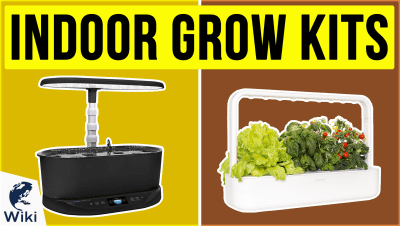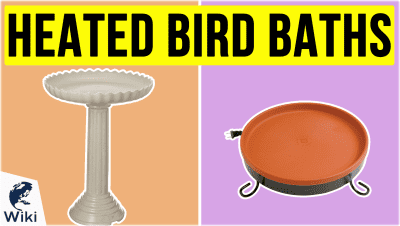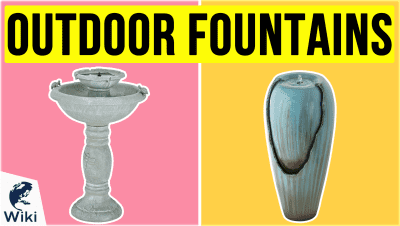The 10 Best Grow Tents

This wiki has been updated 42 times since it was first published in July of 2015. Whether you're hoping to overwinter your favorite edibles or maintain a steady supply of medicinal herbs year-round, a grow tent lets you bring the garden indoors to keep delicate plants healthy and thriving in an environment optimized for light, moisture and temperature. It's also a great way to get a jump on the season by starting seedlings in a cozy, climate-controlled nursery. When users buy our independently chosen editorial selections, we may earn commissions to help fund the Wiki.
Editor's Notes
December 10, 2020:
We have added four new indoor grow tents to the previous list. Although there have been many innovations in the indoor growing industry over the last few years, the tents have remained basically the same, so most have been added for issues of availability or simply replace older models. That said, the addition of all-metal connectors and stronger poles means that the latest tents are more durable. We have also tried to offer a list of differently sized units to accommodate growers with less space available.
The Mars Hydro is a quality product that was added to replace the Apollo Horticulture which was not as available and a little outdated. It boasts extra-thick mylar, a steel frame and connectors, and light-proof zips. It is also excellent value. The Vivosun Cube was added as a great choice for people who want to use attic-space for their setup, as it has a peaked roof to maximize interior volume in what can be a difficult exterior space to erect a grow tent.
We added the Quictent SGS to replace the previous model for availability issues. It is strong for its size, and is SGS approved which means that heat and light will not affect the tent material, which can sometimes emit gases that can be harmful to certain plant species. It is also available in multiple sizes. The Ipower 36x36 is an affordable simple growing solution. Although smaller than many other choices on the list, it has all the important features you need to get started, including dual-sleeved duct ports and a viewing window.
May 01, 2019:
Having a controlled grow environment will maximize your chance of germinating your plants and bringing them to maturity. A good tent will help take chance out of the equation by providing your plants with a stable, predictable environment to thrive in. The products on our list all achieve the necessary functions: they allow you to situate your seedlings indoors, where you can easy regulate the temperature; they help control and adjust the amount of light and ventilation; and finally, because they're sealed, they protect your horticultural specimens from pests and contaminants. With that said, variations in the price between competing tents are the result of important differences in features. For example, the thickness and density of the canvas used is important, both because it prevents external light from leaking in, and because a tear in the fabric can turn a functional nursery into a useless one. With an ultra-high denier count of 1680, the costly Gorilla GGT88 reflects the superiority of its material in its price. Another important feature is the reflectivity of the internal mylar. The more reflective it is, the higher the light's efficiency, cutting down on the amount of electricity needed. The Opulent Systems Garden, for example, uses an impressive 98% reflective Mylar. However, this particular model is a bit lacking in ventilation. Finally, there's the matter of sizing. Finding a unit with dimensions to fit inside your home can be tricky, but many of our picks offer various sizes to accommodate your needs.
Special Honors
Yield Lab 60x60 The Yield lab 60x60 is notable for the fact that it features two separate rooms in one tent. One is for the vegetative stage of your plants and the other for flowering. This means that you can be efficient and harvest your crop more quickly, without having to wait for clones to germinate or use a separate tent. growace.com
The Benefits Of Grow Tents
With outdoor gardening, the types of plants that can be grown are largely determined by the weather.
Grow tents have helped to revolutionize personal indoor growing due to their versatility and cost-effectiveness. Grow tents allow the user to create the ideal environment for various plants through the use of lights, fans, humidifiers, and air conditioners applied to the enclosed space in the grow tent.
With outdoor gardening, the types of plants that can be grown are largely determined by the weather. For instance, tomatoes require relatively warm environments to thrive. They would not grow well in winter when temperatures are cold and the elements are intense. Grow tents effectively eliminate weather limitations. Tomatoes grown in the controlled environment of a grow tent are only limited by how effectively the user can adjust the internal environment to the likes of their tomatoes.
Light is also an issue in outdoor environments. Plants which thrive in low-light environments may be scorched in areas along the equator. Conversely, plants which love light may be dwarfed by the low light provided in many areas of the world. Grow tents allow the grower to control how much or how little light reaches the plants, and when that light is applied.
When compared to simple indoor cultivation methods, grow tents also waste less light. This is due to the reflection of light created by the inside surface of grow tents. In many indoor growing environments, the sole source of light comes from lights hanging directly above the plants. In nature, after all, the sun moves across the sky, casting light on different areas of the plant.
Imperfect reflective surfaces, such as the walls of a grow tent, act to scatter the light rays they collect from above, delivering them to different areas below the canopy foliage through a process called diffuse reflection. This means more efficiency in light use, energy expenditure, and, ultimately, happier plants.
Beware The Nutrient Lockout
Whether growing in a soil medium or using a hydroponic system, everyone is looking to create the most delicious, appealing flowers and fruiting bodies that they can. From growing a butternut squash to win the prize at the county fair to growing tomatoes for home consumption, size matters in the hobbyist's grow tent. A common mistake made trying to achieve this size is to constantly push more and more nutrients into the growing medium, in hopes that the plants will use them.
The best way to eliminate nutrient lockout is to perform a flush.
In reality, this doesn't happen. In contrast to humans, plants can only eat what they need to grow. If there are 100 units of nitrogen in the soil, and the plant only needs ten, then 90 will remain in the soil. If 100 more units are added the next day, and the plant only eats 10, now 180 units remain. If this process continues, it can contribute to an issue known as nutrient lockout, as salts clog the roots of the plants, inhibiting their uptake.
The problem with nutrient lockout is that it can produce symptoms in plants which resemble nutrient deficiencies, leading growers to add more nutrients, causing further symptoms. The best way to eliminate nutrient lockout is to perform a flush. Saturate the growing medium with clean water, and then apply a small amount of organic fertilizers to avoid any nutrient deficiencies which can accompany flushes.
Which Lighting Is Best For A Grow Tent?
The best light for any plant is the Sun. Plants have adapted over millions of years to best draw energy from the light spectrum that the Sun produces. Because of this, the best grow light for any plant will be the light which best mimics this spectrum. As various plants are adapted to different ways of photosynthesizing light, they respond better to different visible light rays.
These lights can often get to a color temperature of 6,500K or beyond, while still providing the lower spectrum rays plants need.
The ideal range for most plants is 4,000-6,000 Kelvin, which is the unit used to measure the color temperature of a light. The higher the number is, the more blue the light will appear, while the lower it is, the more red the light will appear. This can help mimic the actions of the Sun in the sky, as some plants thrive in the evening when sunlight is more red.
Fluorescent rays are good for growing small houseplants, but for full-light plants that need to be grown indoors, they will need the power and versatility delivered by HID or LED lights. These lights can often get to a color temperature of 6,500K or beyond, while still providing the lower spectrum rays plants need. These broad parameters allow plants to thrive both during blue light vegetative states and more red light flowering states.
LED grow lights offer a broad spectrum and produce less heat than HID lights, but they are less intense. LED lights are also particularly energy-efficient. HID lights like metal halide and high pressure sodium provide more distance and intensity than LEDs or fluorescents, but they produce a considerable amount of heat and cannot be used in unventilated growing areas. HPS bulbs are ideal for blooming, while MH bulbs are suited to vegetative growth. For this reason, many indoor growers use a combination of the two.



